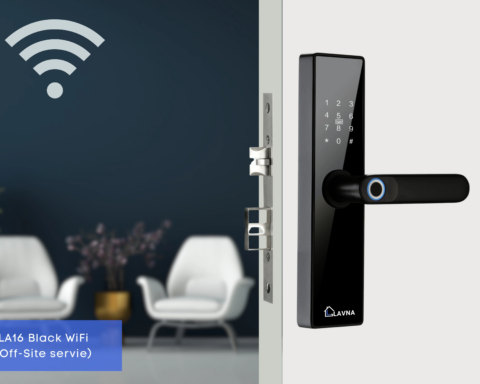By Sanat Jain, Co-founder of Lavna Locks
In the age of smart technology, our homes have become more interconnected than ever before. From thermostats that adjust to our preferences automatically to lighting systems that can be controlled remotely, our living spaces have become smarter and more convenient. At the heart of this revolution lies smart locks, offering a seamless blend of convenience and enhanced security. However, the sophistication of these smart locks requires an equally sophisticated security system, and that’s where machine learning plays a vital role.
Smart Locks: Seamlessly Convenient and Secure
Smart locks have transformed the way we secure our homes and businesses. They offer unparalleled convenience through smartphone apps, voice commands, and even remote access control. Homeowners can lock and unlock doors from anywhere, grant temporary access to guests, and receive real-time notifications of every entry and exit. Yet, the trust we place in smart locks hinges on their ability to keep our homes and properties safe.
Security Challenges in Smart Locks
The adoption of smart locks has ushered in a new era of security challenges that need adaptive solutions:
- Password Policies and Vulnerabilities: Users might choose weak or easily guessable passwords, leaving smart locks susceptible to brute-force attacks.
- Device Vulnerabilities and Exploits: Like any connected device, smart locks can be targeted by hackers searching for vulnerabilities to exploit.
- Social Engineering and Phishing Attacks: Deceptive tactics can trick users into revealing their credentials, jeopardizing the security of their smart locks.
- Physical Security Threats: Smart locks can also be physically tampered with, demanding robust defences against physical breaches.
Machine Learning for Security Enhancement
Machine learning (ML) technologies offer a dynamic and adaptive approach to security, ideal for the ever-evolving threats posed by smart locks. Here’s how ML contributes to enhancing the security of these systems:
- Behavioural Analysis and User Patterns: ML algorithms can learn and understand typical user behaviour patterns, such as the times they usually lock and unlock doors. If an anomaly occurs, like an unexpected access attempt, the system can trigger an alert or request additional authentication.
- Anomaly Detection and Threat Identification: ML models excel at identifying unusual patterns in access requests, such as multiple failed login attempts or access from an unfamiliar location, and they can take appropriate actions to mitigate potential threats.
- Enhanced Password Strength Assessment: Machine learning can assess the strength of user passwords and prompt users to create more robust ones, thereby reducing the risk of brute-force attacks.
- Biometric Authentication and Identity Verification: Implementing biometric authentication, supported by machine learning algorithms for recognition, adds an extra layer of security by verifying the user’s identity through unique physical traits.
- Continuous Learning and Adaptation: ML systems continuously adapt to emerging threats by analyzing new data and updating their algorithms, ensuring that smart locks remain secure against evolving attack methods.
- Physical Security Monitoring and Intrusion Detection: ML can monitor the physical integrity of the smart lock. If tampering or forced entry is detected, the system can trigger alarms or initiate lockdown procedures.
As smart locks become integral to our lives, the need for robust security measures becomes paramount. Machine learning, with its adaptability and capacity to learn from data, offers a powerful solution to the evolving security challenges posed by smart locks. By implementing effective password policies, addressing device vulnerabilities, countering social engineering, and enhancing physical security, smart lock systems can provide a higher level of security while retaining the convenience that makes them so appealing. The role of machine learning in enhancing security for smart locks represents not just technological advancement, but also a significant step towards ensuring the safety and privacy of our homes and businesses in the digital age.







